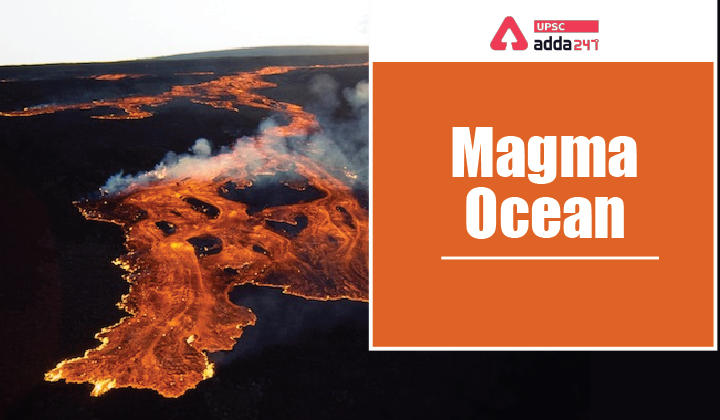What is Magma Ocean?
Earth was an ocean of magma i.e. in a total molten stage in the past. The heavier iron and nickel went to the core while the lighter silicates stayed in the mantle.
Evolution of Earth
- The inner planets or terrestrial planets or rocky planets Mercury, Venus, Earth, and Mars are formed by accretion or by rocky pieces coming together and forming a planet by increased pressure and high temperature caused by radioactive elements and gravitational forces.
- Our Earth was an ocean of magma before the elements crystallised and stabilised and the different layers such as core, mantle were formed.
- The heavier elements like iron went to the core while the lighter silicates stayed in the mantle.
- By using the meteorite as an analogue for Earth, we can unearth more details about the formation.
Hypothesis on the formation of the Moon

- IIT Kharagpur scientists have studied a meteorite that fell near the town of Katol in Nagpur District of Maharashtra on May 22, 2012, reporting for the first time, the presence of veins of the mineral bridgmanite, which is the most abundant mineral in the interior of the Earth, within the Katol L6 Chondrite meteorite.
- This finding adds evidence to the Moon-forming giant impact.
- Moon-forming giant impact hypothesis is that long ago, nearly 4.5 billion years ago, the Earth collided with a planet the size of Mars named Thela, and the force of this impact was so huge as to melt the Earth down from the surface to a depth of 750 km to 1,100 km.
- The hypothesis goes that this collision caused the Earth to be bathed in a magma ocean, and the ejecta from the collision led to the formation of the Moon.
What is Bridgmanite
- Bridgmanite is the most volumetrically abundant mineral of the Earth’s interior.
- It is present in the lower mantle (from 660 to 2700 km), and it is important to understand its formation mechanism to better comprehend the origin and evolution of planetary interiors.



 TSPSC Group 1 Question Paper 2024, Downl...
TSPSC Group 1 Question Paper 2024, Downl...
 TSPSC Group 1 Answer key 2024 Out, Downl...
TSPSC Group 1 Answer key 2024 Out, Downl...
 UPSC Prelims 2024 Question Paper, Downlo...
UPSC Prelims 2024 Question Paper, Downlo...




